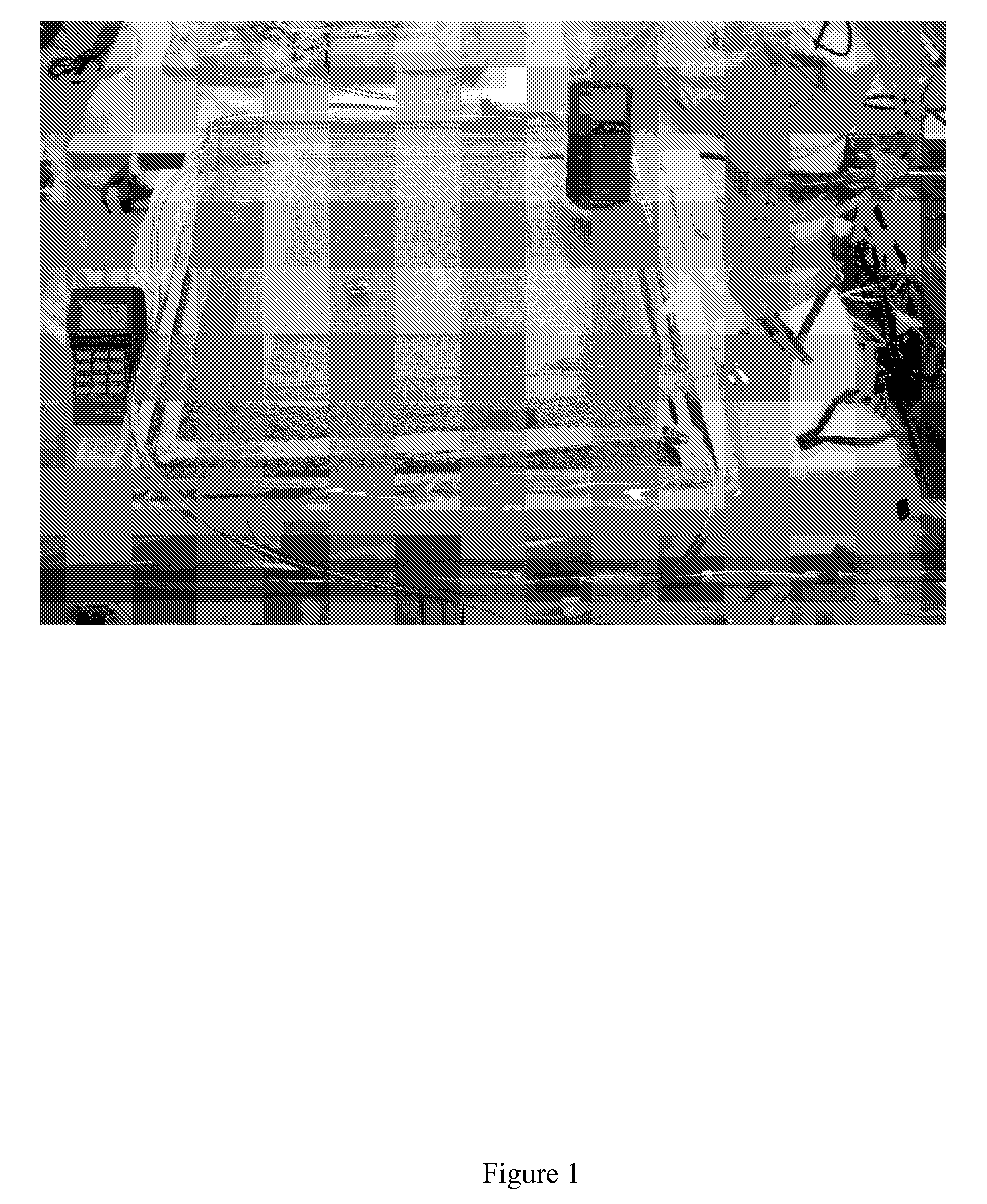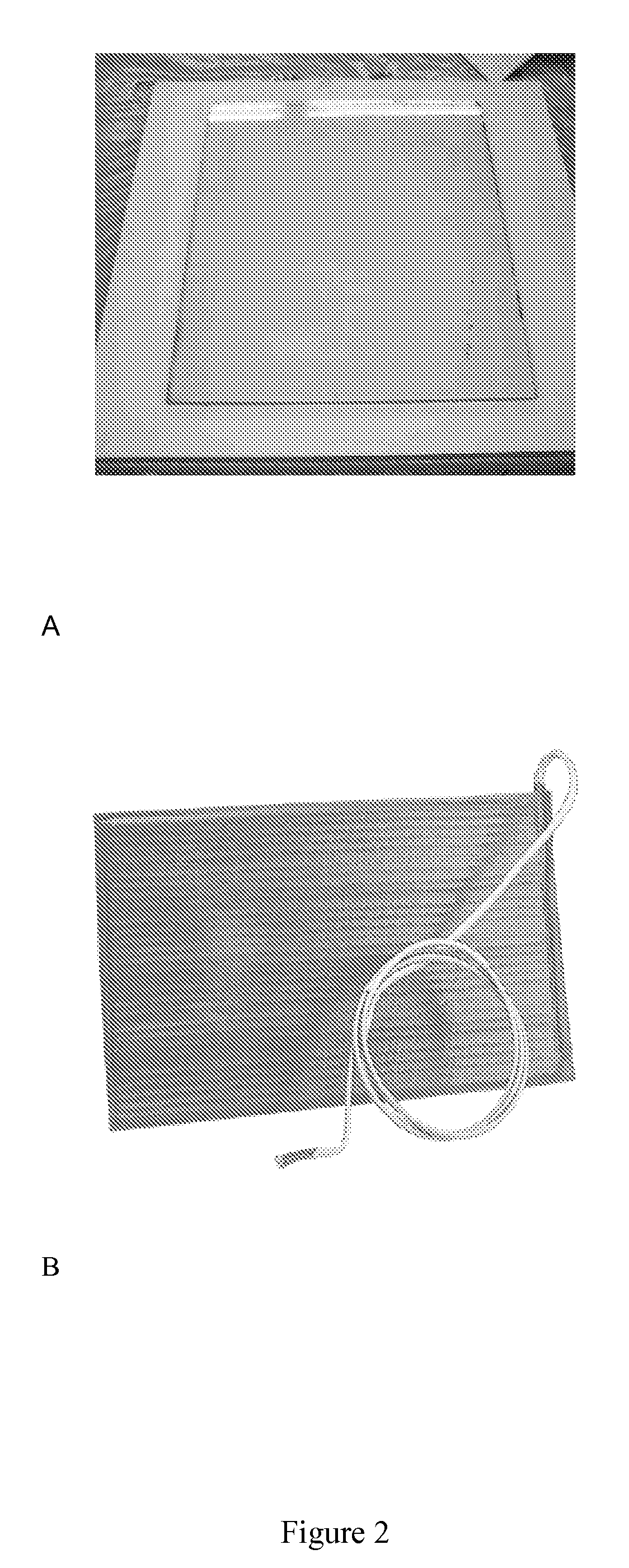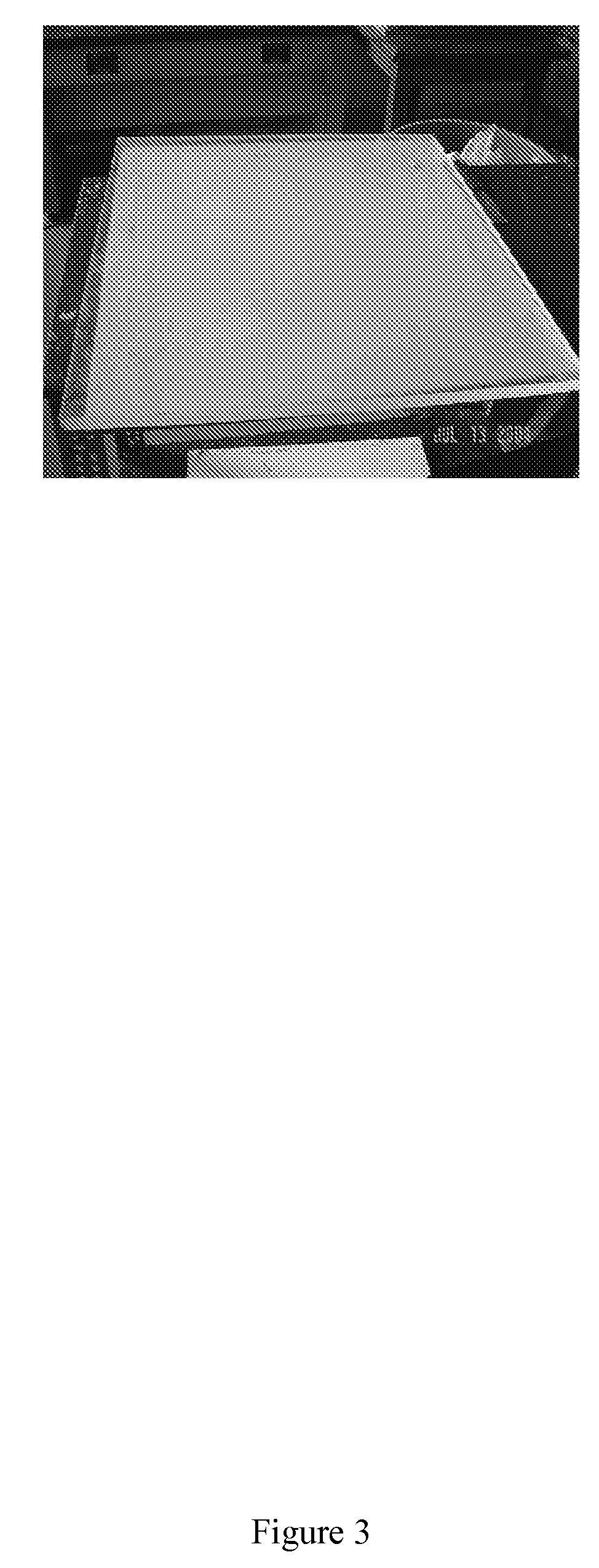Heat vacuum assisted resin transfer molding processes for manufacturing composite materials
a technology of vacuum assisted resin transfer molding and composite materials, which is applied in the direction of lamination, lamination apparatus, chemistry apparatus and processes, etc., can solve the problems of high manufacturing cost, lack of resin systems suitable for ambient temperature vartm processes, and general inadequate conventional vartm processes, so as to improve the fiber volume fraction and/or the dimensional thickness of the composite panel, the effect of improving the reliability and/or cost-effectiveness
- Summary
- Abstract
- Description
- Claims
- Application Information
AI Technical Summary
Benefits of technology
Problems solved by technology
Method used
Image
Examples
example
A. Resin Selection
[0029]The selection of resin is dictated by the end use of the composite. It can be influenced by factors such as mechanical properties, environmental resistance, cost and manufacturability. Accordingly, the properties desired in the final composite should be considered. The most common resins for aerospace applications are thermoset resins, such as esters and epoxies. Some of the most common epoxies used are tetraglycidyl methylene dianiline (TGMDA) and diglycidyl ether of biphenol A (DGEBA).
[0030]The most common resins for aerospace applications are thermoset resins, such as esters and epoxies. Thermoset resins polymerize to a permanently solid and infusible state upon the application of heat. Once the thermoset resin has hardened, it cannot be reliquidified without damaging the material. Thermoset resins have excellent adhesion, high thermal stability, high chemical resistance and less creep than thermoplastics. Since their viscosity is low, the fabric can be co...
PUM
| Property | Measurement | Unit |
|---|---|---|
| temperature | aaaaa | aaaaa |
| temperature | aaaaa | aaaaa |
| temperature | aaaaa | aaaaa |
Abstract
Description
Claims
Application Information
 Login to View More
Login to View More - R&D
- Intellectual Property
- Life Sciences
- Materials
- Tech Scout
- Unparalleled Data Quality
- Higher Quality Content
- 60% Fewer Hallucinations
Browse by: Latest US Patents, China's latest patents, Technical Efficacy Thesaurus, Application Domain, Technology Topic, Popular Technical Reports.
© 2025 PatSnap. All rights reserved.Legal|Privacy policy|Modern Slavery Act Transparency Statement|Sitemap|About US| Contact US: help@patsnap.com



